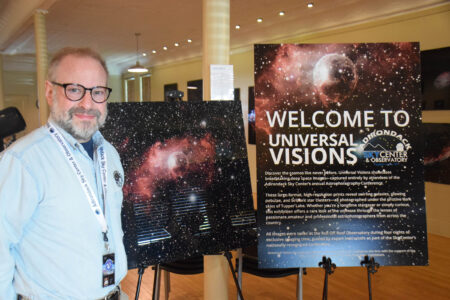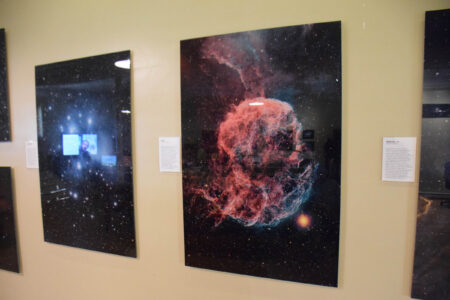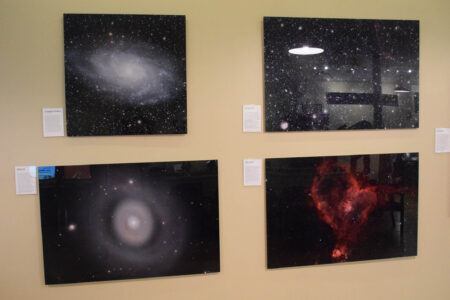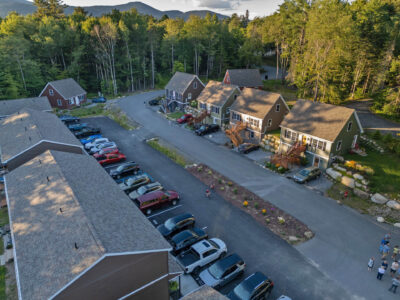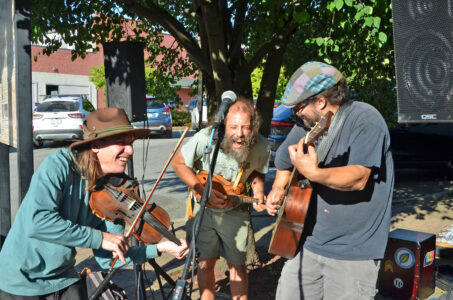The art of science
Adirondack Sky Center & Observatory unveils astrophotogahy exhibit
- Adirondack Sky Center & Observatory President Seth McGowan smiles in the Astronomy Hub in Tupper Lake on Friday, next to a poster for the Universal Visions exhibit, right, and a photograph of the Bubble Nebula that McGowan took for the center’s Roll Off Roof Observatory. The exhibit features ultra-high-resolution prints of deep space photos — all taken from its observatory on Big Wolf Road in Tupper Lake. (Enterprise photo — Chris Gaige)
- Photos that are part of the Universal Visions exhibit are seen at the Adirondack Sky Center and Observatory’s Astronomy Hub in Tupper Lake on Friday. (Enterprise photo — Chris Gaige)
- Four of the dozen featured photos for the Universal Visions exhibit are seen at the Adirondack Sky Center and Observatory’s Astronomy Hub in Tupper Lake on Friday. (Enterprise photo — Chris Gaige)
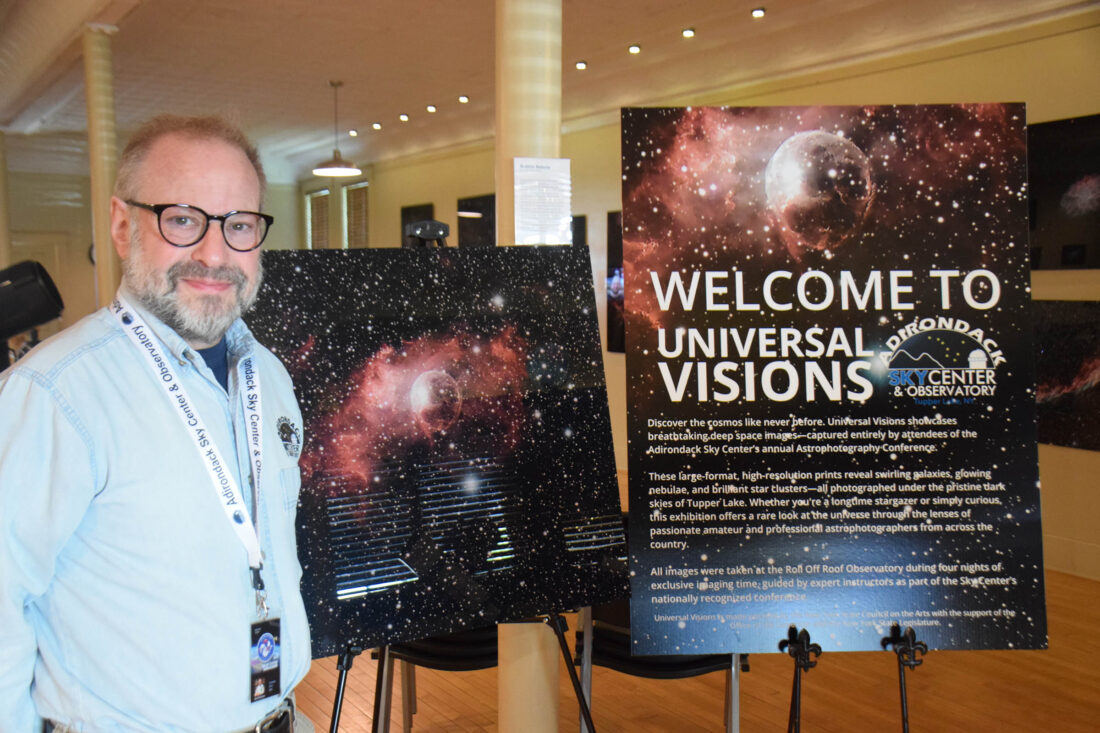
Adirondack Sky Center & Observatory President Seth McGowan smiles in the Astronomy Hub in Tupper Lake on Friday, next to a poster for the Universal Visions exhibit, right, and a photograph of the Bubble Nebula that McGowan took for the center’s Roll Off Roof Observatory. The exhibit features ultra-high-resolution prints of deep space photos — all taken from its observatory on Big Wolf Road in Tupper Lake. (Enterprise photo — Chris Gaige)
TUPPER LAKE — The latest exhibit at the Adirondack Sky Center & Observatory’s Astronomy Hub on Park Street is as artistically inspiring as it is scientifically grounded.
On Thursday, the sky center unveiled “Universal Visions,” a collection of 12 large and ultra-high-resolution prints of deep space photos — all taken from its observatory on Big Wolf Road in Tupper Lake.
The photos capture nebulae, stars and galaxies taken with specialized cameras that use high-powered telescopes as their primary lens. The dozen photos feature brilliant red and blue illuminations and formations, often from stars collapsing or being created.
Adirondack Sky Center & Observatory President Seth McGowan said that, believe it or not, the photos on display are not color-enhanced. He said that comes from various gases — often hydrogen and oxygen — being illuminated under certain high temperatures, which are provided by stars’ radiation energy. McGowan said it’s the same concept as neon signs — just out of this world.
Sometimes, other gases “illuminate,” but at a color outside of the visible light spectrum and are therefore invisible to the naked eye. McGowan said that photo editing with color enhancement, in these cases, is often used as a prudent measure to better convey the elements present in the shot.
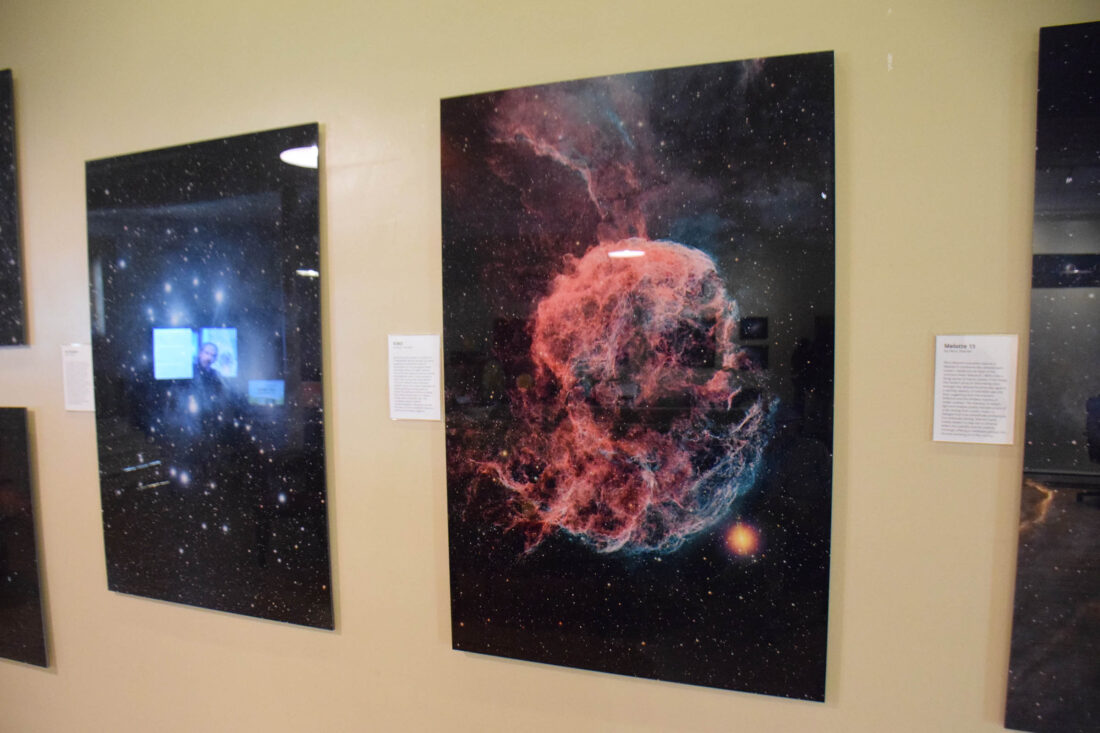
Photos that are part of the Universal Visions exhibit are seen at the Adirondack Sky Center and Observatory’s Astronomy Hub in Tupper Lake on Friday. (Enterprise photo — Chris Gaige)
McGowan said the Adirondack Sky Center & Observatory secured a grant from the New York State Council on the Arts for the printing, which would have otherwise exceeded the sky center’s budget. While the requisite technology is rooted in science, he said that actually getting the shot is a work of art.
“We use the science, but the composition alone of some of these objects is just like taking a portrait or a landscape of mountains,” he said. “You’ve got to get the composition just right. … There’s a lot of artistic decisions.”
McGowan said the photos were taken at the Adirondack Sky Center & Observatory’s annual astrophotography conference, which is held in September around the dates each year that coincide with the new moon — when the absence of moonlight allows for optimal deep space shots.
“A lot of the folks have said they’ve tried to do this stuff where they are,” he said. “But they come here because of the dark skies and because of us. That’s what allows them to do this stuff.”
He said the conference draws between 30 and 40 people each year, but noted that it’s not for beginners and attendees should have some sort of background in astrophotography and its specialized technology. The sky center had a model setup to accompany the exhibition, which included the primary telescope lens and a specialized “pilot lens.” This lens locks onto the photo subject and sends directions to a small motor to keep the primary telescope moving to stay aligned for the photo, a function that’s necessary because the Earth is constantly rotating. These are both linked to a computer, or some other electronic device, that serves as the “brains” of the setup.
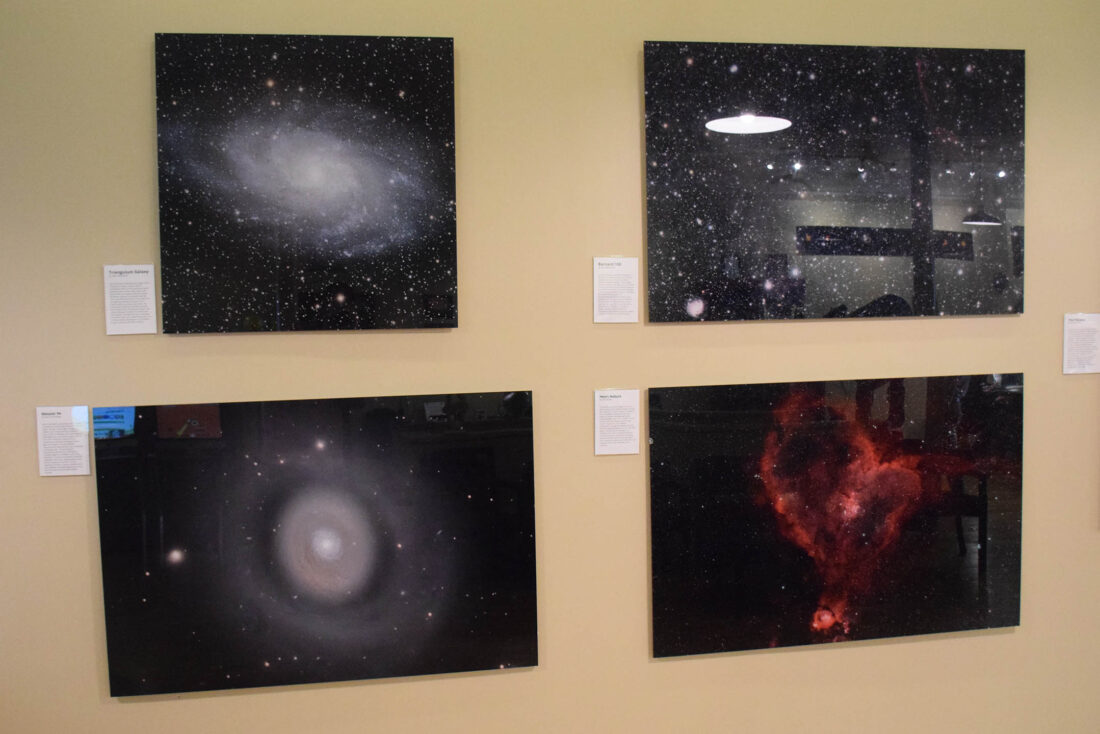
Four of the dozen featured photos for the Universal Visions exhibit are seen at the Adirondack Sky Center and Observatory’s Astronomy Hub in Tupper Lake on Friday. (Enterprise photo — Chris Gaige)
Many participants bring their own unique camera setups that vary in focus range. McGowan said that’s beneficial for the conference, as astrophotography is heavily constrained by the type of equipment, given that each individual lens has a relatively narrow focus range, and there are massive differences in the distances of various deep space photo subjects.
McGowan said it was gratifying to know all of these elaborate photos were taken through the dark skies that only a handful of locations throughout the eastern U.S. — the Adirondacks being one of those — can provide. The photos will remain on display at the Astronomy Hub as a standing exhibit and are available for view during regular hours. More information about that can be found at adirondackskycenter.org.

